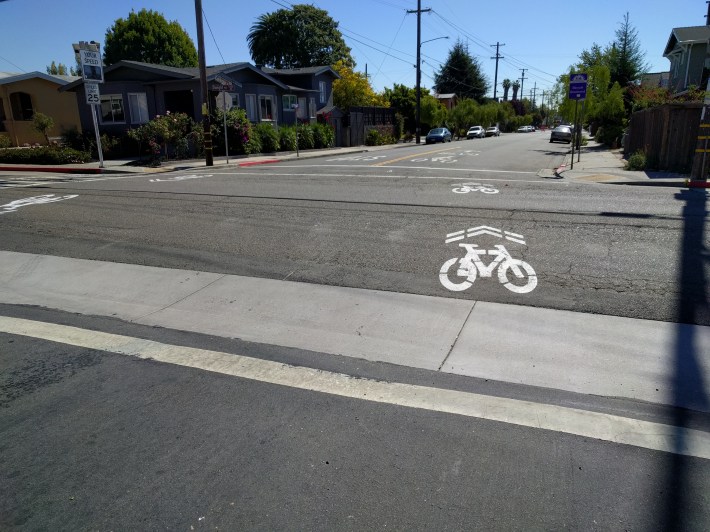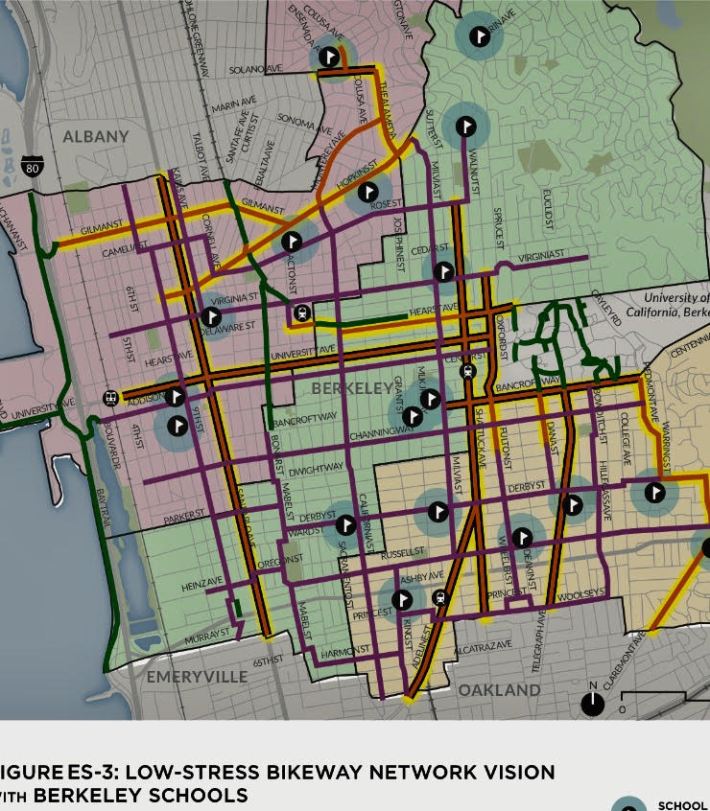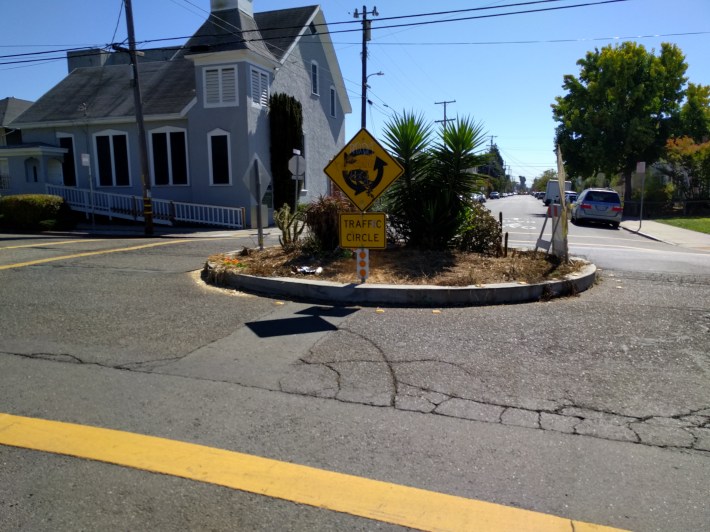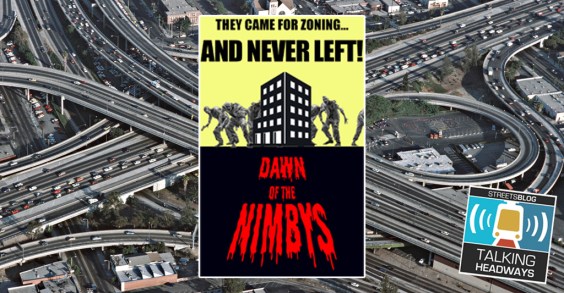Berkeley bike advocates are pushing back against the use of "Rectangular Rapid Flashing Beacons (RRFBs or flashers)" in the city's bicycle visioning plan. The idea is to use them where 'bike boulevards' cross heavily trafficked streets. In an op-ed this week in Berkeleyside, bike advocate Charles Siegel makes a compelling plea for the city to instead install four-way stop signs, specifically at the intersection of California and Dwight.
From the article, entitled "Unsafe traffic control at California and Dwight":
Berkeley’s two major bike advocacy groups, Bike East Bay and the Berkeley Climate Action Coalition Transportation Working Group, both agree that flashers are not safe at bike boulevard crossings. Because many middle-schoolers bicycle through this intersection, flashers may actually make the crossing less safe.

Siegel's concern is that kids riding bikes, and perhaps even adults unfamiliar with the area, will assume the bicycle boulevard gives them the right of way across the intersection. Indeed, pedestrians on a crosswalk will have the right of way, and the flashing lights will help remind drivers of that. But people on bikes, unless they dismount and walk in the crosswalk, do not. It invites confusion, conflicts, and, writes Siegel, more crashes:
I also hope that the City Council changes its decision about California and Dwight to make it safer. In this year alone, two middle school bicyclists were hospitalized after collisions at this intersection – one on April 21, 2017, and one on Sept. 26, 2017.

For a bit of background, Berkeley has a network of low-stress bike boulevards. Diverters close these streets to through car traffic. The city also has traffic circles at many intersections, making it difficult for motorists to speed. However, at intersections with major streets, such as Dwight and MLK, bike features just drop out, and cyclists often have no easy or safe way to get across the street to continue their journeys. As a result, Berkeley has built a system of "low stress" bike boulevards that, in reality, become exceedingly high-stress every few blocks.
Adding flashing lights may sound like a good idea, but bike advocates would rather see a four-way stop. "Why are we proposing flashing beacons, when the beacons give the bicycle no legal priority?" asked Dave Campbell, Advocacy Director for Bike East Bay.
Streetsblog hopes that Berkeley will consider other options too, such as traffic circles, which are already prevalent at many other intersections in Berkeley, and seem to do a reasonable job at controlling speed. This might also be a case for a protected intersection, which can be signalized or not, of the kind frequently seen in the Netherlands.

But Campbell brings up another compelling point, and it's one which Streetsblog hopes city officials will give keen attention: what about now?
Stop signs are cheap, they don't take long to put in, and they have a good compliance rate (relatively speaking). "Regardless of the long term solution, be it two months, nine months, six months--that four way stop sign should go up yesterday," he said. With all of these unsafe conditions that cities of the Bay Area have identified, it's kind of unfathomable that engineers don't have some temporary measures that can go in overnight while the situation is studied--construction sites set up traffic diversions and add stop signs overnight, so why would we leave a known conflict point while a long-term solution is debated? As Siegel pointed out in his editorial, people have already gone to the hospital because of the unsafe conditions at Dwight and California--what is the city waiting for?
"When parents stand on the porch watching their kids ride off to school, they shouldn't have to worry about whether they'll get hit crossing the street," said Campbell.






